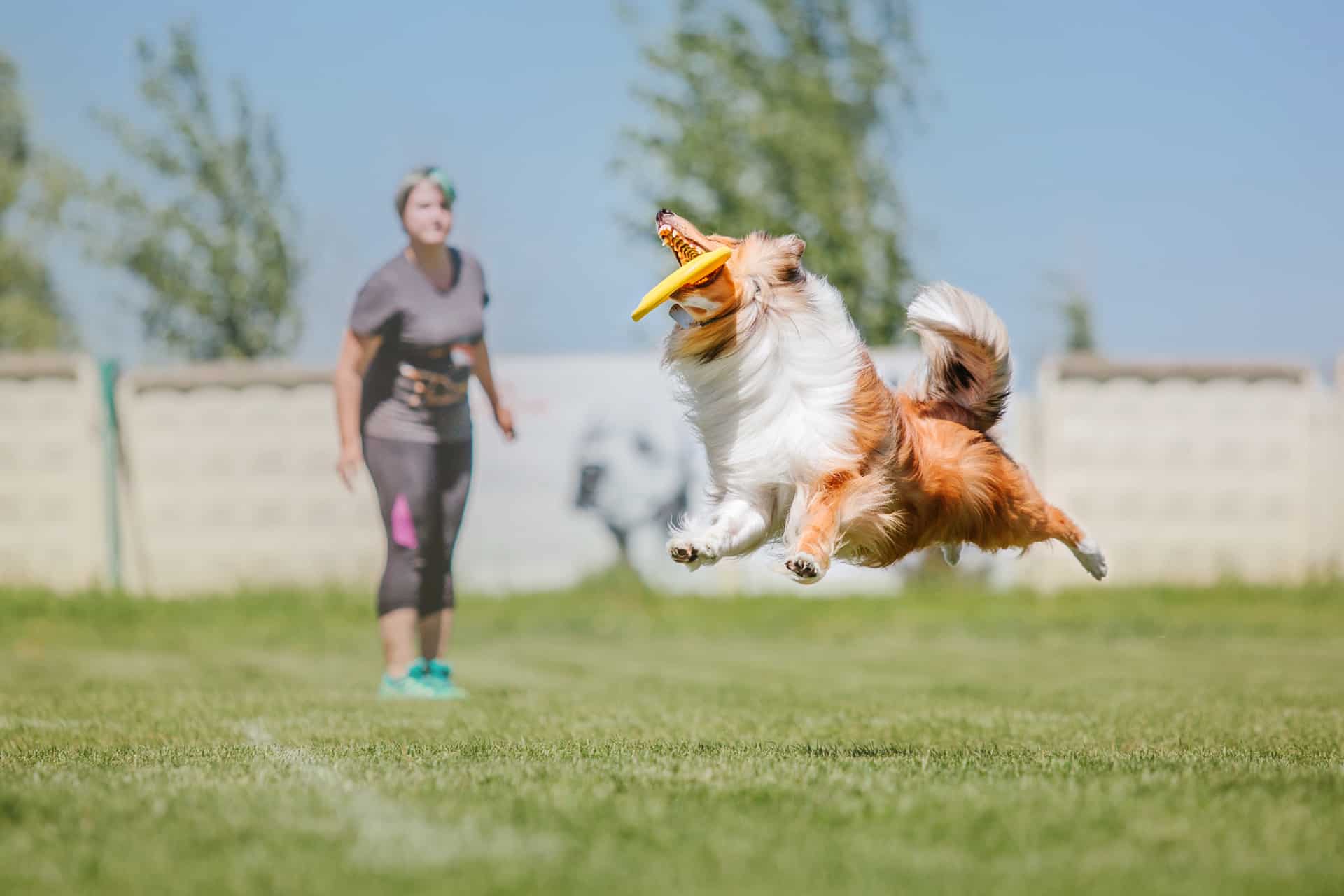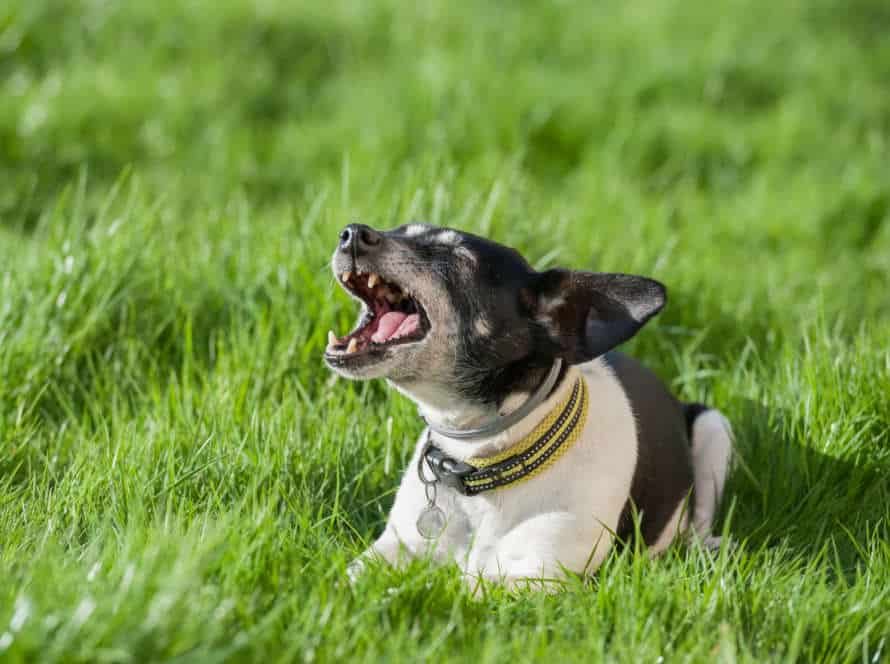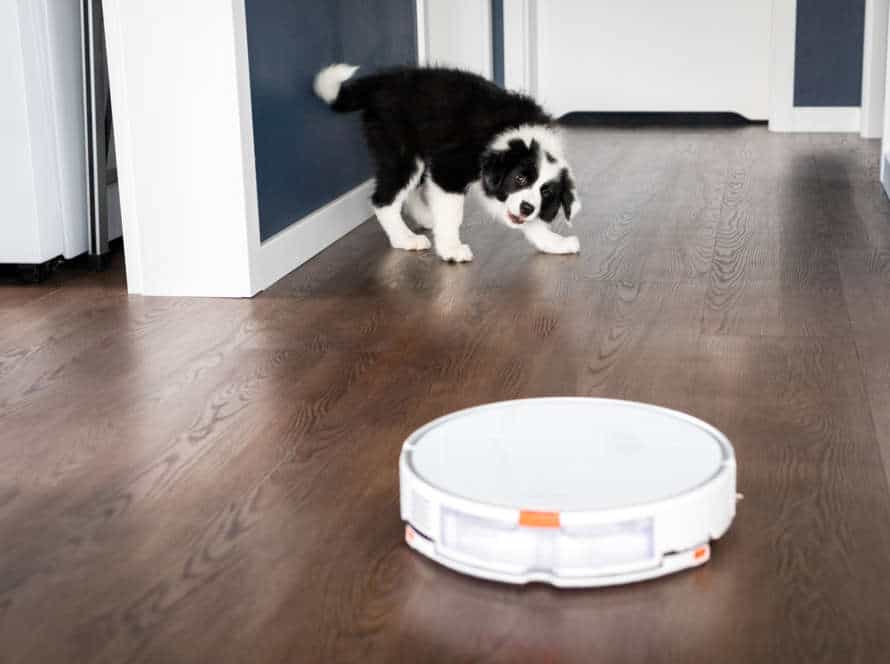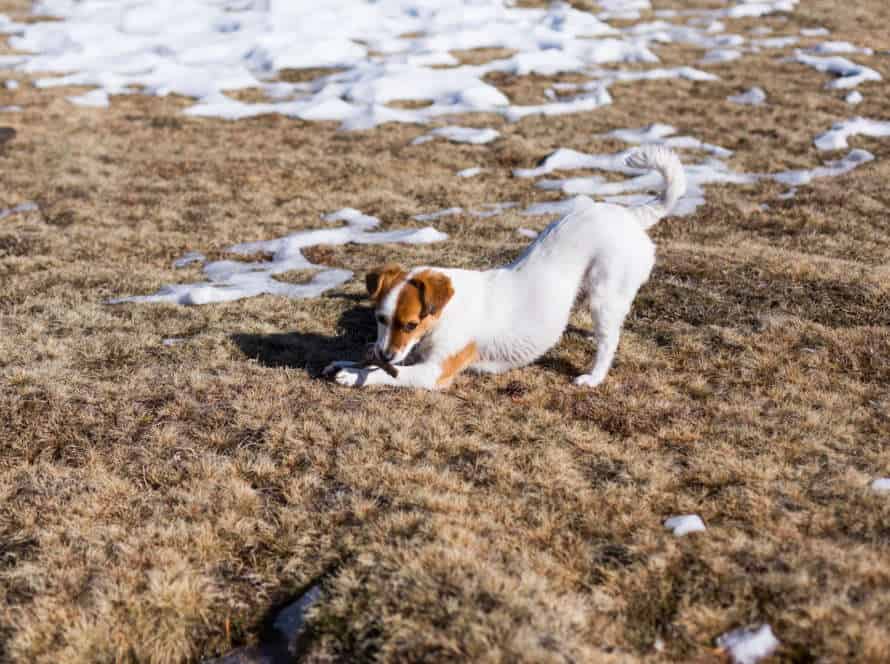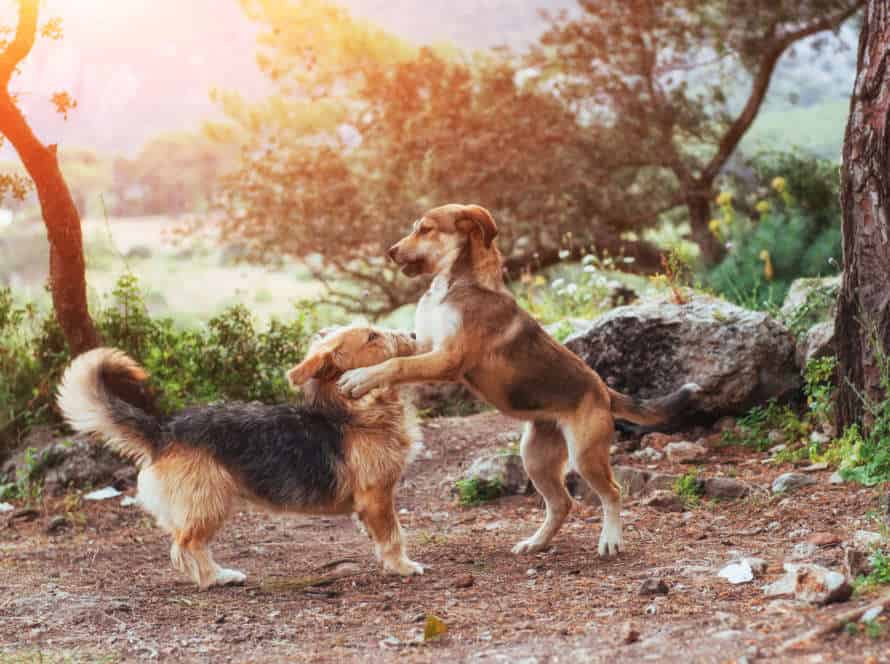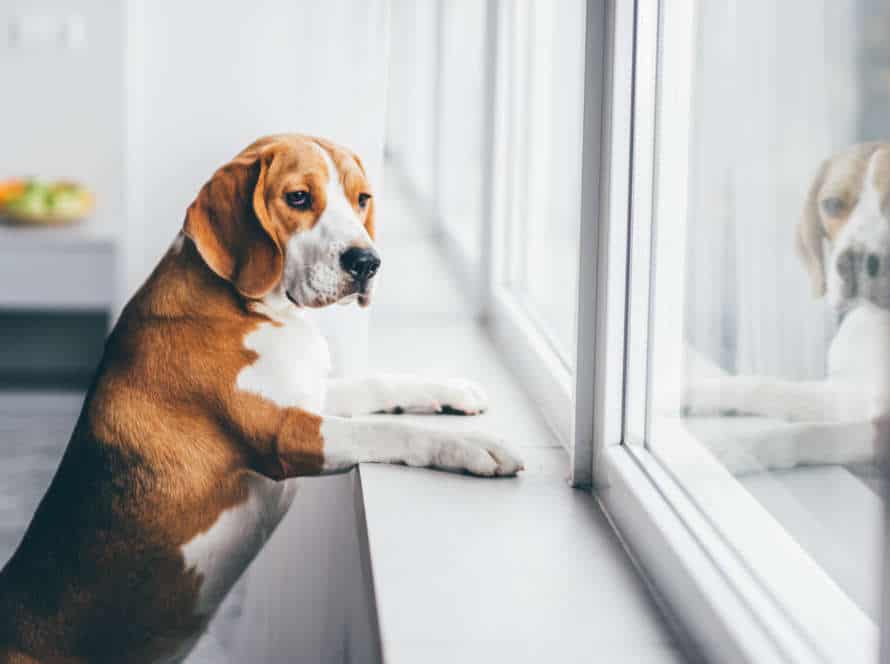How to Use Positive Reinforcement to Prevent Jumping
Positive reinforcement is an efficient way to stop your pup from jumping. Here’s how to do it:
- When you or your dog approach each other, no attention if they jump. Instead, say “off” or “down” and wait until they settle.
- Once they have all four paws on the ground, give them a reward like praise, treat, or their favorite toy. This reinforces the behavior of keeping all four paws on the ground.
- Keep repeating this and get others in your home or guests to use the same technique. This can help your pup stop jumping and greet people in a relaxed way.
Pro Tip: Positive reinforcement techniques work best with a consistent training routine, lots of patience, and praises.
Understanding the Importance of Positive Reinforcement
Positive reinforcement – a great tool! It’s a way to encourage good behavior in dogs. Reward them for what they do right, and they’ll learn to avoid doing the wrong things. Like jumping. In this article, we’ll explore what positive reinforcement is and how it can be used to stop dogs from jumping and other bad habits.
Why Positive Reinforcement is Effective for Jumping Prevention
Positive reinforcement is an effective technique for stopping dogs from jumping. It rewards the desired behavior, instead of punishing the unwanted behavior.
Here’s how to use it:
- Give treats, toys or praise when your pup stays calm and doesn’t jump.
- Always reward good behavior and ignore/redirect bad behavior by telling your pup to “sit” or “stay“.
- Be patient and consistent when training – jumping is natural for dogs. You’ll need time and repetition to make a change.
Positive reinforcement not only prevents jumping, but it also strengthens the bond between you and your pup, while creating a positive learning space.
How Positive Reinforcement Promotes Positive Behaviour
Positive reinforcement is a great way to promote desirable behavior in people, animals, and pets. It works by rewarding the behavior you want.
Here’s how to use it to stop pet jumping:
- Wait until your pet approaches calmly and without jumping.
- Then, reward them with treats, toys, or praise.
- Ignore or redirect their jumping with a firm but gentle voice. Or, turn away from them until they settle down.
- Consistently reward calm behavior with reinforcements.
- Don’t accidentally reward jumping by responding with attention or treats.
With patience and consistency, positive reinforcement can stop jumping, and encourage positive behavior in pets, kids, and adults.
The Role of Consistency in Positive Reinforcement
Consistency is very important in positive reinforcement methods, like training dogs not to jump. Positive reinforcement is the technique of rewarding wanted behaviors, not punishing unwanted ones. Not using positive reinforcement in a consistent way can cause confusion in the animal and weaken the success of training.
Here’s how consistency prevents jumping:
- Define the wanted behavior: Make sure your dog knows that jumping is bad, and sitting or standing is good.
- Reward constantly: Give your dog praise every time it stands or sits instead of jumping up.
- No mixed signals: Always send the same message and don’t give confusing signals, like letting it jump up during play time but not during training.
- Practice often: Constantly reinforce desired behaviors during training and throughout the day, until it becomes normal.
- Make clear commands like “sit” or “down“.
- Give treats or praise when following your command.
- Anticipate when your pup may jump and use commands.
- Immediately reward them for not jumping.
- Identify what your dog likes. For some, it’s food. For others, maybe praise, a toy or a game.
- When your dog is calm, give them the reward. This will help them know what behavior is wanted.
- If they jump, don’t give them the reward. This will show them jumping won’t get them anything.
- Be consistent and patient with positive reinforcement. With practice, your dog will understand good behavior gets a reward. Then, they will jump less.
- Timing is the name of the game – give the treat right after the desired behavior.
- Be consistent – reward your pet each time they do the right thing.
- Go for high-value treats – keep the yummiest ones for problem behaviors.
- Combine treats with love – pet your pup while offering a treat to make the connection stronger.
- Train them to “sit” and “stay” on command.
- Give them a treat or say something nice when they obey the commands and don’t jump.
- Speak firmly and clearly to your pup to tell them not to jump.
- Interactively play with them and teach them new tricks to keep their minds and bodies active.
- Make an obstacle course or take them on long walks or runs to give them a good workout.
- Reward system – Use a clicker or say a cue when your pet behaves. Give treats, toys and love straight away.
- Be consistent – Short, regular training sessions make a difference. Don’t forget to reward your pet when they do well.
- Patience – Positive reinforcement takes time. Be patient and don’t get frustrated if progress is slow.
- Reward them with treats or compliments when they obey commands, such as “heel” or “sit”.
- Use a clicker to signal a job well done. Connect it to treats or positive reinforcement like playtime or cuddles.
- Be consistent – reward them each time they obey and don’t reward when they don’t.
- To prevent jumping, direct their attention to a toy or treat when they start.
- With time, positive reinforcement will become a habit, and they’ll associate good behavior with rewards and praise.
- Teach “sit” and “stay” commands.
- Give treats and verbal praise when your pet follows instructions.
- Say “off” when they start jumping.
- Reward when they stop.
- Enforce the “off” command and reward good behavior.
- Give rewards when pup stays calm, sits or stays when you enter the room.
- Ignore jumping behaviour and turn away. Reward with attention or treats only when pup is calm.
- Teach pup the “four-on-the-floor” command and use positive reinforcement to reinforce the behaviour.
Pro Tip: Don’t forget, consistency is key in positive reinforcement, and patience is what leads to success.
Using Positive Reinforcement to Prevent Jumping
Positive Reinforcement is an amazing way to stop your pup from jumping on you or anyone else. This training technique rewards the behavior you desire. It’s based on the concept that dogs will keep doing things that give them a reward. Let’s take a look at how to use positive reinforcement to avoid jumping.
Identifying Your Dog’s Triggers for Jumping
Identifying what makes your pooch jump is key. Positive reinforcement is the way to go. Common triggers include excitement, greetings, and attention-seeking. To find out what your pup’s triggers are, observe their body language, environment, and behavior in different situations.
Once you’ve figured it out, reward good behavior, redirect their attention, and teach them alternative behaviors. For example, if they jump when someone visits, give them a treat-filled toy or teach them to sit or stay instead.
Positive reinforcement is a humane and effective way to train your dog. It takes time and patience, but with dedication and practice, you can prevent jumping and build a better relationship with your furry friend.
Establishing Clear Rules and Boundaries
Creating rules and boundaries with your pup can keep a happy and healthy relationship. Jumping is an important thing to monitor. Punishment, negative reinforcement or negative attention aren’t needed to change this behavior. Positive reinforcement is more humane and effective. This is how:
Through time and consistency, your pup will learn that calm behavior is rewarded and not jumping.
Choosing Appropriate Rewards for Good Behaviour
Dogs love to jump when they meet humans. But, to stop this behavior use positive reinforcement with suitable rewards. Here are the steps to take:
Techniques for Positive Reinforcement
Positive reinforcement is a great tool for training your pup. Learn how to use it to replace their jumping with better behaviors. This article will cover various techniques. With the proper reinforcement, you can teach your dog not to jump. You can encourage them to do other behaviors instead.
Treats and Food Rewards
Treats and food rewards are great for reinforcing good behavior in your pet, and discouraging bad stuff like jumping. Use these tips for success:
Remember to keep portions small, and adjust their diet accordingly.
Pro tip: Don’t use treats as a bribe, give ’em for good behavior instead.
Verbal Praise and Affection
Verbal praise & affection are great tools for positive reinforcement – especially when trying to stop excessive jumping in pets. When your pet greets you without jumping, instantly use a cheerful voice to say “good boy/girl” & “nice greeting.” Offer them physical affection – like patting their back, giving a hug or a gentle belly rub – after they act positively towards you. Be consistent. Reward them with verbal praise & a physical reward each time they greet you without jumping. Pets react well to positive reinforcement – but consistency with rewards is important for long-term results.
Pro Tip: Combine verbal praise & affection with healthy treats for an optimal reinforcement experience for your pet.
Play and Physical Exercise
Playing with your pooches and giving them enough physical activity is super important for their overall health. Positive reinforcement techniques can help stop them from doing things like jumping on people.
Here are some tips to use positive reinforcement so your pup won’t jump:
With consistent and positive reinforcement, you can train your pup to avoid jumping and do good behaviors.
Combining Positive Reinforcement with Other Training Techniques
Positive reinforcement–a great way to reduce jumping in your pup. When used with other training methods, its effectiveness skyrockets! In this article, we’ll discuss how to use positive reinforcement and other tactics, like redirection, to stop your canine companion from jumping.
Using Positive Reinforcement with Clicker Training
Clicker training is a popular way to train pets with positive reinforcement. It uses a sound, usually a clicker, to show the animal they did something right and get a reward.
Combine this with other techniques for an effective plan. Here are tips on prevention of jumping with positive reinforcement:
By combining positive reinforcement with other training, you can stop your pet from jumping and other unwanted behaviors.
Incorporating Positive Reinforcement with Leash Training
Positive reinforcement is a great technique for leash training your pup. Here’s what to do:
Consistency and Patience in Training
Train your pet with consistency and patience. Combine positive reinforcement with other methods. Here’s how to use positive reinforcement to stop jumping:
Patience and consistency create a strong bond.
Maintaining Positive Reinforcement for Long-Term Success
Positive reinforcement is a great way to train your pup and stop them from jumping. Give them treats and praise when it does what you want. To make sure your efforts last, you need to keep up the positive reinforcement. This article will give you tips to keep it up and succeed!
Recognizing When to Adjust Rewards
Adjust rewards to maintain positive reinforcement. If your pet isn’t responding to the current rewards, switch to verbal praise or playtime. Upgrade to higher value treats if necessary. If your pet is jumping, redirect their attention with a toy or move them to an area dedicated to jumping. Always reward positive behavior. Over time, you’ll identify their preferred rewards and use them to promote long-term success.
Avoiding Punishment-based Techniques
Punishment-based techniques can have bad long-term effects and ruin the bond between you and your pup. Positive reinforcement is the key to success! Here’s how to use it to stop jumping:
Positive reinforcement is a great way to train dogs. Pro tip: Be consistent and you’ll see success in no time!
Staying Consistent and Positive in Training.
Staying consistent and positive in training is essential for maintaining positive reinforcement. This leads to long-term success with your pup! To achieve this, use positive reinforcement techniques to prevent jumping.
Treats, praise, and playtime are great rewards to reinforce good behavior.
Also, teach ‘sit’ or ‘stay’ and reward your pup for obeying commands and not jumping.
Ignore their jumping and give attention and rewards only for good behavior. Be patient and consistent with training – it may take some time for them to learn new habits.
Pro Tip: Keep positivity alive! Consistent positivity yields amazing results when training your pup.
Frequently Asked Questions
Q: What is positive reinforcement?
A: Positive reinforcement is a training method where desirable behaviors are rewarded with praise, treats, or attention.
Q: Can positive reinforcement stop my dog from jumping on people?
A: Yes, positive reinforcement can effectively prevent jumping by rewarding your dog for staying down.
Q: What should I do when my dog jumps on me?
A: Ignore the jumping behavior and wait for your dog to calm down. Once your dog has all four feet on the ground, reward them with praise or treats.
Q: Can anyone use positive reinforcement to prevent jumping?
A: Yes, positive reinforcement is an easy training method that anyone can use to teach their dog good behavior.
Q: Is there anything else I can do to prevent jumping?
A: You can also teach your dog an alternative behavior, such as sitting or lying down, which will redirect their attention away from jumping.
Q: How long does it take to train a dog using positive reinforcement?
A: The time it takes for a dog to learn depends on the dog’s personality and the consistency of their training. With positive reinforcement, desirable behaviors will become second nature to your dog over time.

